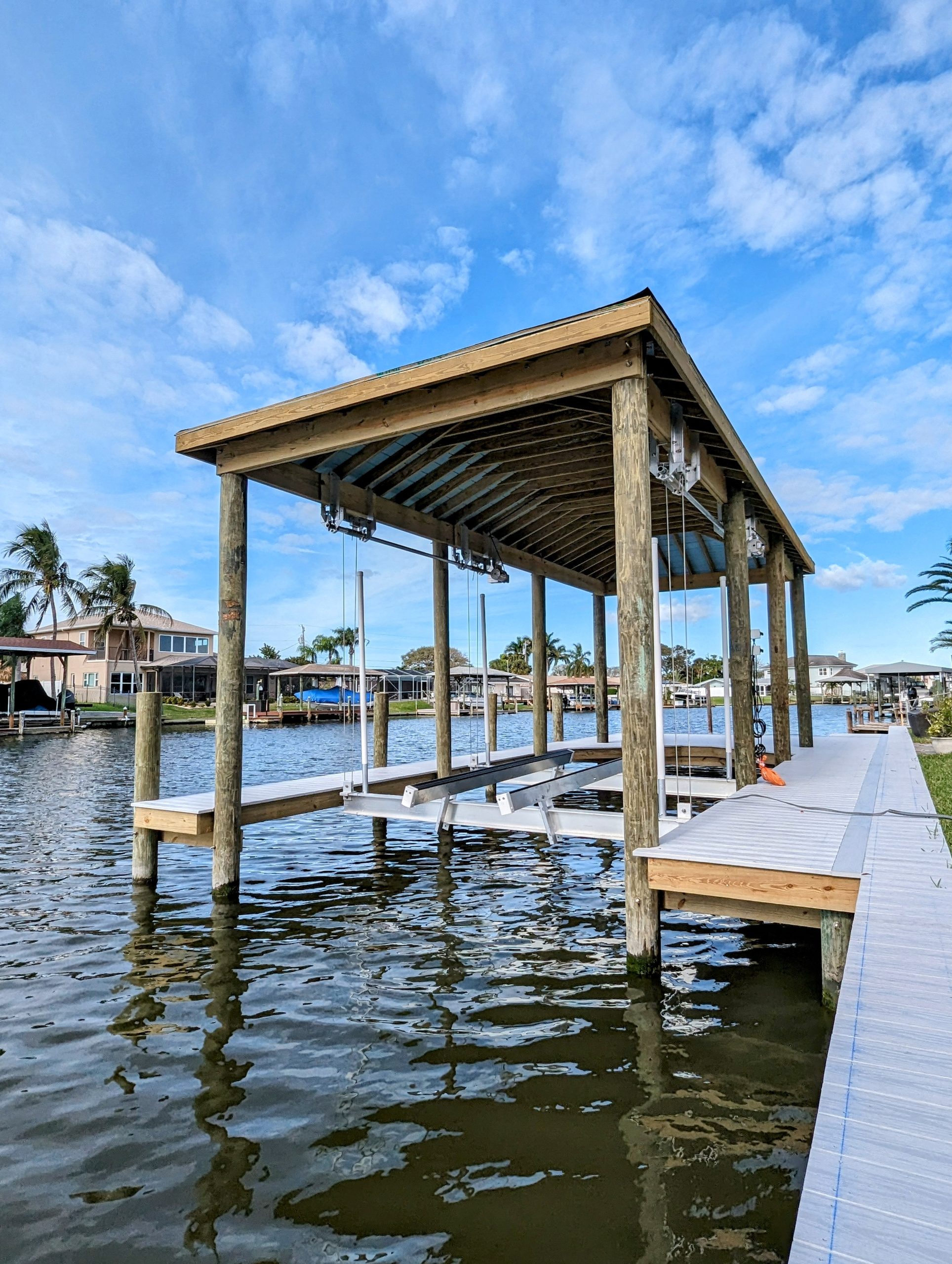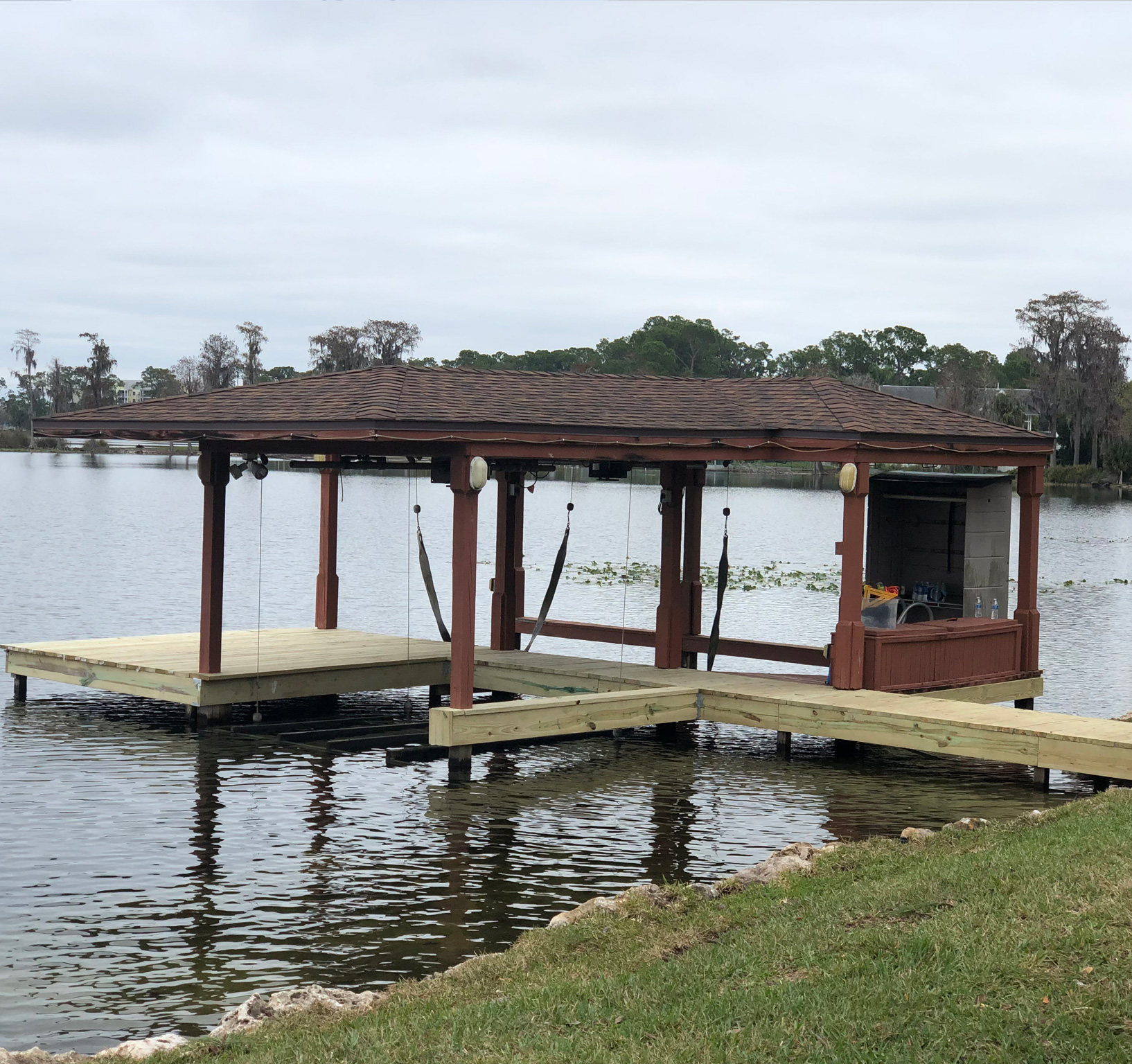DIY Tips for Simple Dock Repairs You Can Manage
DIY Tips for Simple Dock Repairs You Can Manage
Blog Article
Reliable Dock Repair Service Techniques: Guaranteeing Architectural Integrity
Guaranteeing the structural honesty of anchors through efficient repair strategies is critical for the longevity and safety of aquatic centers. Subsequently, picking the appropriate repair service materials, such as composite products and corrosion-resistant alloys, is essential for sturdiness.
Assessing Dock Damage
Examining dock damages is an essential initial step in making sure the structural honesty and safety of any docking facility. This preliminary analysis entails a comprehensive evaluation to determine both visible and surprise problems. Trick facets to take a look at consist of the dock's structure, pilings, outdoor decking, and hardware. Each element needs to be scrutinized for signs of wear, rot, corrosion, or other forms of degradation that might compromise the architectural honesty.
Structural engineers or qualified inspectors generally execute these assessments making use of specialized devices and techniques. As an example, undersea inspections may utilize sonar devices or from another location operated vehicles (ROVs) to detect immersed damages. Over water, aesthetic examinations are enhanced by using moisture meters and other diagnostic tools to discover underlying concerns not promptly visible to the naked eye.

Deciding On Fixing Materials
Choosing the ideal repair service products is an essential action in the dock remediation procedure, one that directly influences the long life and performance of the fixed framework. Product choice should be driven by factors such as ecological conditions, load-bearing demands, and compatibility with existing dock components.
Along with wood, composite products are significantly preferred as a result of their longevity and reduced upkeep requirements. Composites, typically made from a mix of plastic and timber fibers, provide exceptional resistance to rot, pests, and UV damages. For metal anchors, selecting corrosion-resistant alloys such as galvanized steel or marine-grade aluminum is vital to stop corrosion and ensure architectural honesty in saline water problems.
Epoxy resins and marine-grade sealers are crucial for repairing fractures and sealing joints, giving a waterproof barrier and boosting the dock's total toughness. By diligently picking premium materials, dock repair work can attain lasting outcomes, consequently securing against future destruction and making sure secure, trusted use.
Structural Support Methods
Efficient structural support strategies are critical in guaranteeing the stability and long life of dock repairs. One fundamental technique entails using steel or composite support bars (rebar) within concrete structures. Rebar offers added tensile strength, preventing splits and distributing tons much more evenly. This approach is particularly efficient for anchors subjected to heavy lots Going Here or harsh ecological conditions.
An additional necessary strategy is the application of fiber-reinforced polymers (FRP) These products use high strength-to-weight ratios and outstanding resistance to corrosion, making them perfect for enhancing concrete or wooden docks. FRP can be used in sheets or strips and bonded with epoxy resins to enhance structural integrity.
Supporting and anchoring systems additionally play a critical function in structural reinforcement. Cross-bracing, making use of metal or wooden beams, can combat lateral forces, lowering persuading and activity. Securing systems, such as helical piers or driven stacks, supply a stable structure by moving lots to deeper, much more secure dirt layers.
Finally, the integration of load-distribution plates can help disperse weight much more equally across the dock's surface, minimizing local stress and anxiety points. These techniques collectively ensure that anchors remain robust and risk-free, qualified of withstanding the rigors of their operational atmosphere.
Advanced Repair Methods
Another advanced method entails undersea welding, which permits repair services to be performed without the demand to dewater the location. This technique is specifically useful for attending to structural problems in immersed dock parts, ensuring very little disruption to operations. Boosted welding methods, coupled with robot systems, supply accuracy and integrity, therefore prolonging the life-span of the dock.
Additionally, cathodic defense systems are carried out to avoid corrosion in metallic dock structures. By utilizing sacrificial anodes or impressed existing systems, these techniques efficiently reduce the electrochemical procedures that result in product degeneration.
Lastly, progressed monitoring modern technologies, such as structural health tracking (SHM) systems, supply real-time information on the condition of dock structures. These systems enable proactive upkeep and prompt interventions, inevitably making certain the lasting architectural honesty of the dock.
Maintenance and Avoidance
Upkeep and prevention are fundamental concepts that underpin the longevity and security of dock frameworks. Routine assessments are critical, permitting very early detection of damage, possible weaknesses, and environmental effects. A positive technique, entailing regular checks for deterioration, rot, and architectural shifts, mitigates pricey repair services and extends the dock's operational life.
Safety nets ought to include applying protective coverings to steel parts to defend against rust and using treated wood to resist degeneration. In addition, guaranteeing appropriate drain and ventilation can protect against water accumulation, which is a common reason for architectural degradation. Integrating top quality materials and adhering to supplier standards throughout building and construction and repair service stages also play crucial functions in boosting durability.

Educating workers in dock upkeep best practices makes sure constant application of precautionary measures. Leveraging technological advancements, such as drones for evaluations and sensors for real-time surveillance, can even more enhance upkeep efforts. By prioritizing maintenance and prevention, dock proprietors can make certain structural integrity, functional safety and security, and cost-effective monitoring over the dock's life-span.
Verdict
In verdict, maintaining the structural integrity of aquatic facilities requires thorough dock repair service methods. Advanced fixing techniques, coupled with regular upkeep practices, make sure the dock stays operational and risk-free under varied environmental problems.
Making sure the architectural integrity of anchors via effective repair work methods is extremely important for the durability and safety of marine facilities.Selecting the appropriate repair products is a crucial action in the dock reconstruction process, one that straight influences the durability and performance of the repaired framework.Efficient structural support my response strategies are crucial in ensuring the security and long life of dock repair work. By prioritizing upkeep and avoidance, dock owners can guarantee architectural honesty, functional security, and economical management over the dock's life-span.
In verdict, preserving the architectural stability of aquatic centers demands detailed dock repair techniques.
Report this page